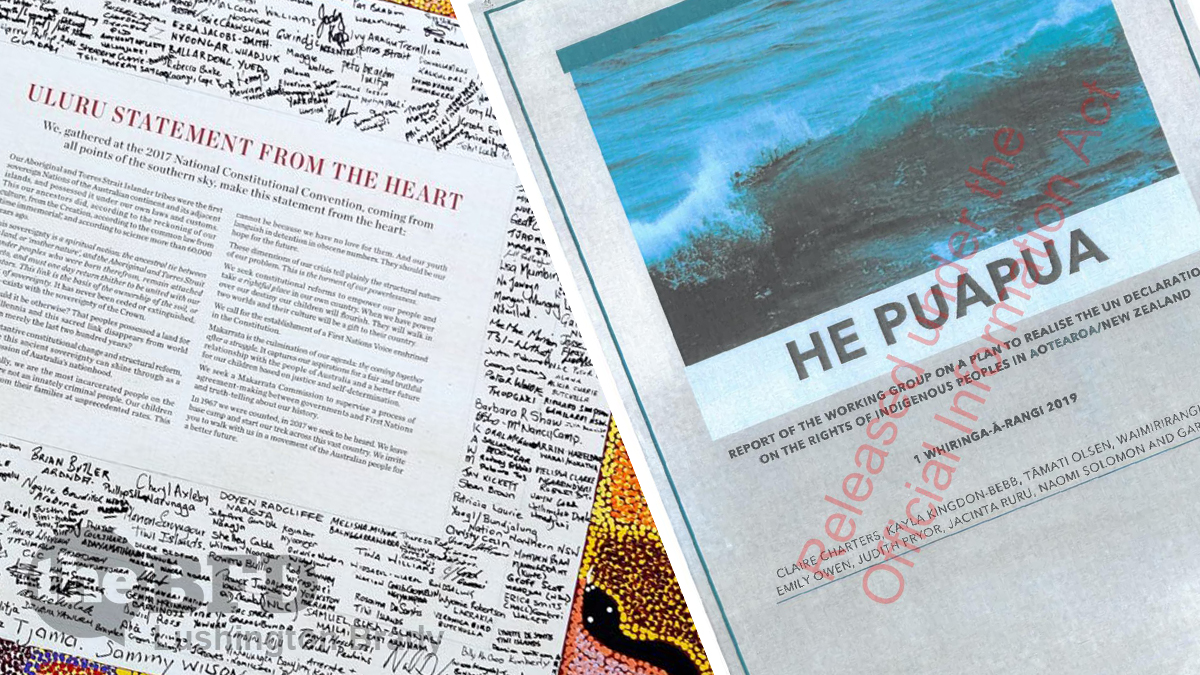As New Zealand slowly wakes up to the fact that its government is attempting to impose racial separatism by stealth, it may be cold comfort to Kiwis to know that it’s being done more or less openly in Australia.
In New Zealand, the separatist agenda has been exposed – for those who choose to see it – by the leaking of Labour’s secretive He Puapua document. That document is a roadmap to apartheid: racially separated land and sea ownership, courts and policing, parliament and public health systems. Some of it is already being implemented by the Labour government, even as it denies it.
In Australia, the racial separatist agenda is being openly peddled by the “Voice” movement.
Of course, like He Puapua, Voice proponents strenuously deny such an agenda. But their protests wear notably thin against the reality of what they’re demanding.
To begin with, let’s look at the term ‘recognition’. Most people would regard it as synonymous with ‘acknowledgement’. That is, they would believe the proposal will be to acknowledge in the Constitution that Aboriginal people were the original inhabitants of this continent. That would seem a worthy and innocuous aim. But, in the context of the Constitution, ‘recognition’ means something more than that.
At the heart of the “recognition” argument is the claim that the Constitution brought together six groups — the peoples of six colonies — and the people it overlooked as partners or participants were the original inhabitants”.
Implicit in that sentiment is the idea that indigenous Australians should have been a seventh partner in Federation. If this were the acknowledged basis for including indigenous Australians in the Constitution it would necessarily imply that some form of distinct political power resided with them. In today’s terms, it would give them the same political status as the six states.
Hem and haw as they might, this implicit argument gives the direct lie to the Voice proponents’ claim that “Recognition” would not create a separate, racially exclusive, political body.
The US Constitution is a Georgian document and it shows: its prose is full of high-falutin’ Enlightenment rhetoric. The Australian Constitution is Victorian-era stuff: dry and no-nonsense.
As anyone who has read it will know, the Constitution is not an aspirational document. It is, to put it simply, a rule book that defines the powers and operation of the federal government. Its prose is arid and to-the-point. And that is as it should be in order to minimize the potential for misinterpretation. The wording of the preamble in the proposed new section is totally at odds with both the rest of the Constitution and the imperative that constitutional provisions should be as clear and unambiguous as possible. No existing provision contains any reference as to why it was included. Phrases such as ‘acknowledging the continuing relationship…’ or ‘respecting the continuing cultures…’ without defining those ‘continuing relationships’ or ‘continuing cultures’ are so ambiguous as to offer an unlimited opportunity for misinterpretation.
The simple fact is that “Recognition” is built on a lie.
[Noel Pearson] claims ‘We are a nation that does not recognise its Indigenous peoples.’
If by recognition he means acknowledgement of Aboriginal people, their place in our history and society, their culture and their achievements, the Constitution – a document almost nobody reads – is the last place you would look.
Instead, you’d find it formally expressed in the Aboriginal and Torres Strait Islander Peoples Recognition Act of 2013. You’d see it in the Aboriginal and Torres Strait Islander flags flying outside every public building in the land. You’d hear it in the ‘acknowledgement of traditional owners’ recitations or the ‘welcome to country’ ceremonies performed at almost every public event. You’d witness it in the performances by Aboriginal artists at the opening ceremonies of every major cultural or sporting event.
Quadrant
Contrary to the endless whining of the Aboriginal lobby, if Australia bent over any further to “recognise” its indigenous peoples, we’d all end up in spinal braces.
And, contrary to their hand-on-heart dissembling, the “Voice” push is a push for a racially separatist Australia, every bit as much as He Puapua is attempting to foist on New Zealand.
Please share this article so that others can discover The BFD

